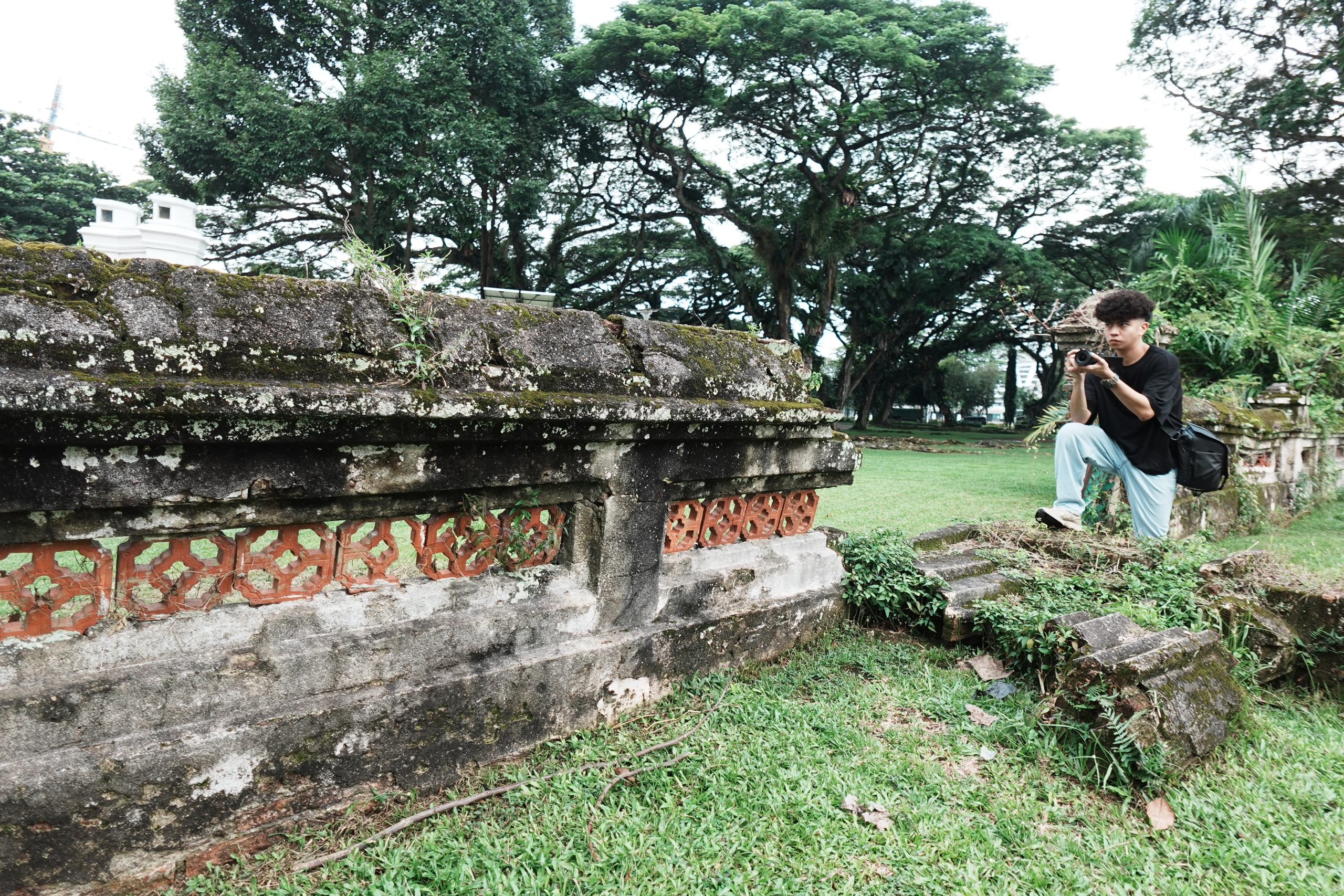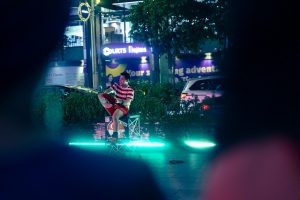Top image: Andre Frois / RICE Media
At first glance, Fazli Rahmat’s YouTube channel looks like another pandemic-era passion project. You know the kind: videos about hawker fare, drone shots of HDB rooftops, maybe some supernatural lore in the mix.
But look closer, and there’s a different kind of haunting—not just ghost stories, but the echoes of tales asking to be remembered.
A marketer by day, the 30-year-old creates videos that capture the unseen sides of Singapore. Old malls still gasping for commercial air, brutalist relics stripped of tenants, and abandoned training grounds once alive with television drama.
It’s urban exploration, yes, but more meditative than thrill-seeking. Less ‘abandoned building challenge’, more elegy for places paved over.
That observational instinct has been with Fazli since boyhood. Growing up in the 90s and early noughties, Fazli saw Singapore through the cloudy windows of SBS buses, tracing the city one transfer at a time because a family car was out of reach.
Those slow, rattling journeys schooled him in the texture of place: the burnt‑orange facade of Carrefour at Suntec, the curves of the old National Stadium, Big Splash’s rainbow slides gleaming against an East Coast sunrise.
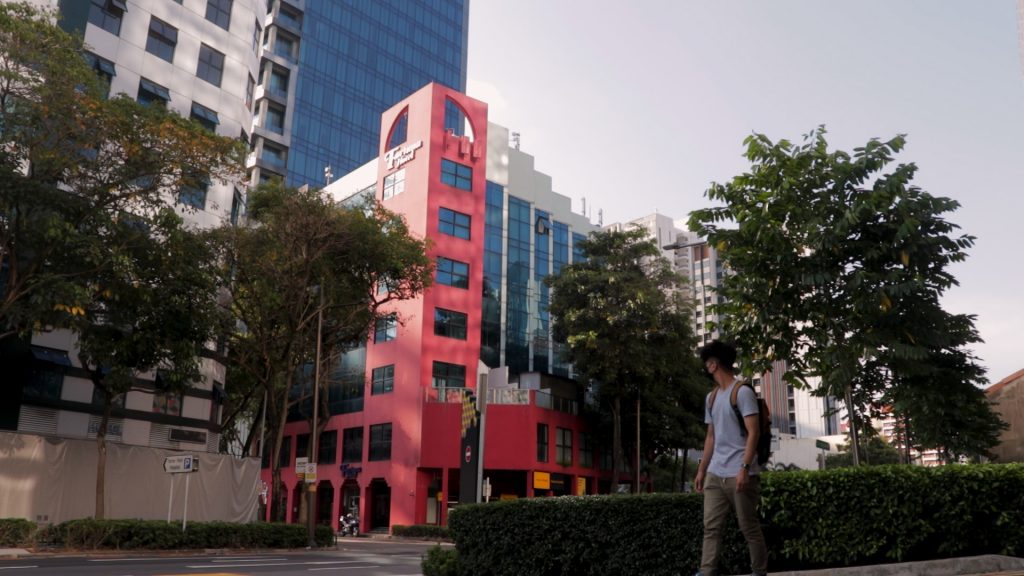
He did not know they were on borrowed time; he only knew their outlines felt permanent. Now, emptied or erased, they live on in the reel of his memory. The ache over not having a camera ready back then explains the personal urgency of his current endeavours, he says.
“These places might be remembered by a plaque or a photo exhibition. But the hard truth is, once a site stops pulling crowds or cash in Singapore, it’s deemed expendable.”
So Fazli films, not just to archive concrete and steel, but to acknowledge the stories that permeated them. He isn’t chasing sponsors or algorithms, but racing to capture forgotten places before they fade—what they meant, who passed through, and why they’re still worth remembering.
“When those buildings are demolished, the memories of why people loved those stacks of bricks are often lost.”
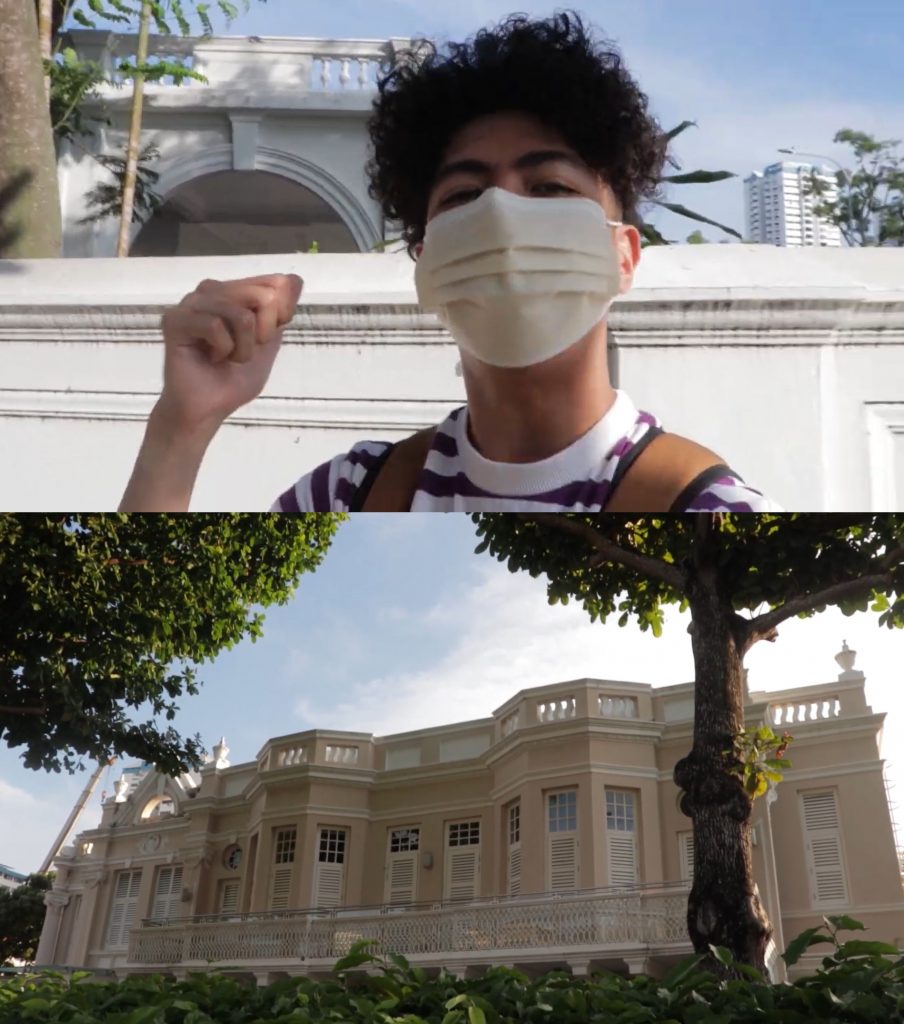
‘You Can’t Say Singapore Is Boring’
Fazli’s passion for storytelling was seeded in a humble upbringing in Hougang, in a flat that overlooked the Paya Lebar Airbase. His most vivid childhood memories include paratroopers drifting through the sky, family birthdays captured on camcorder, and weekly WWF screening sessions with his grandfather.
“We weren’t well-off, but we had enough,” he reflects. Those early rituals—marvelling at pro wrestling theatrics, hijacking his dad’s Sony Ericsson phone to film DIY stunts with his brother—became his first lessons in narrative and cinematography.
Fazli became the unofficial family cameraman, always behind the shutter at gatherings and milestones. It was a way to connect with family, and later, to make sense of the world around him.
At first, he documented simply because he enjoyed observation, but as he revisited his father’s old tapes, he fell deeper in love with the art of framing and preserving.
This desire to cling to fleeting memories eventually led him to formal film studies at ITE.
When COVID-19 clipped our wings in 2020, Fazli, like the rest of us, found himself grounded. But instead of sulking and doom-scrolling, the student filmmaker went outside to hone his craft.
“I figured—why not explore my own country?” he recalls.
Not to Gardens by the Bay or Jewel, but to decaying shopping arcades and crumbling hostels. The sort of places even lifelong Singaporeans have long forgotten.
He felt inextricably drawn to the abandoned Bruneian Hostel, a post-war relic he read about that’s hiding in plain sight from the bustle of Orchard Road.
When he trekked up Tanglin Hill to find it, what he discovered felt like a world slowly dissolving. Vines threading through the hostel’s broken windows, staircases buckling under their own weight, tiles crazed and flaking like dried riverbeds. It was nature repossessing neglected concrete.
Next came Tuas TV World, a forgotten film set he stumbled upon online.
“Singapore has always been lukewarm about investing in local storytelling, so I never knew that the Channel 8 dramas I watched were all filmed in a purpose-built outdoor set.”
Fazli’s voice tightens slightly, weighted with the disbelief of someone who’s watched too many old places vanish without a farewell.
What Fazli coins “Singapore’s own little Hollywood” seemed like a reel from 1940s Singapore paused mid-scene, with ancient shophouse signs and rust‑flecked lamp‑posts left just so—as if the cast and crew had slipped away for lunch and never returned.
These unusual sights never fail to widen his eyes. Fazli doesn’t dwell on the sting of hurried redevelopment. Instead, it fuels him with an indomitable energy—he gladly devotes weekends and days off to trekking to far-flung, lesser-known landmarks to document them before they’re flattened.
Each visit sharpened his instinct, not just for location, but for story. What began as urban spelunking turned into cultural archaeology.
The Respectful Explorer
But in a city like Singapore, almost every door is locked. The instinct to trespass, Fazli admits, is hard to ignore.
“The temptation is there. But I don’t want to encourage viewers to put themselves at risk just to chase clout.”
So he improvises. From a distance, some of his Canon EOS 200D shots seem to watch the world without intruding. Some are framed through fences, over walls, and others from behind glass.
“It’s disappointing when I can only film from the outside,” he admits. “But it’s not worth compromising safety or values.”
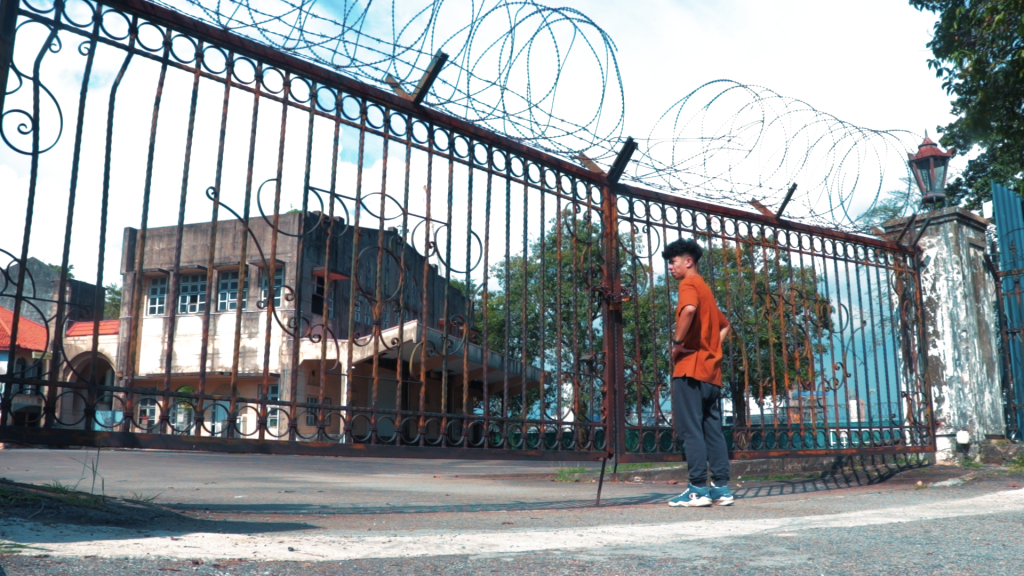
This dance with legality has evoked refreshing thoughtfulness and reverence that sets Fazli apart.
“I’m often carving paths totally different from what I had envisioned, but that’s the restlessness in me,” he explains.
“It pushes me to create, and even the way I problem-solve becomes a creative act.”
That limitation has, in a way, shaped his voice. His videos dwell on textures—peeling paint, the hum of wind through broken shutters—transforming absence into atmosphere.
What emerges is a style uniquely his: contemplative and honest about the limits of access.
And while gradually coming into his own as a visual essayist, he’s added a new facet to his unique filmmaking style. Beyond zooming in on flickering signage and hollowed-out malls, he’s started to linger his lens on the humdrum of familiar heartlands, inviting the viewer to wonder: What stood here before? How did a neighbourhood get its name?
And in doing so, he’s modelling a kind of urban curiosity that’s as responsible as it’s reflective.
Growing Through His Films
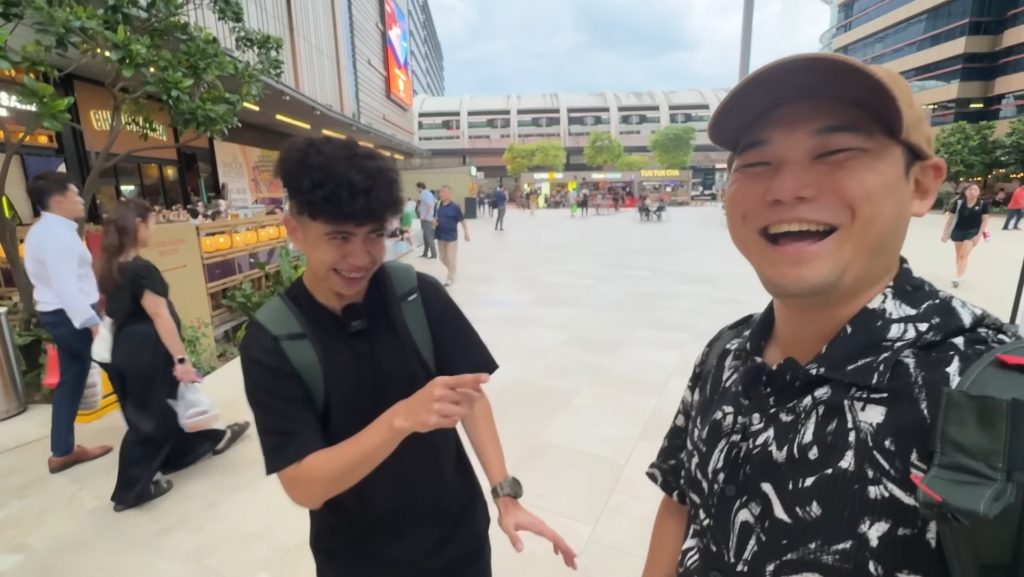
Fazli’s worldview shifted again when he collaborated with Ghib Ojisan, the Japanese YouTuber known for his surprisingly encyclopaedic knowledge of Singaporean oddities.
“It humbled me,” Fazli says. “Here’s someone who didn’t grow up here, and he knew more about my country’s history than I did.”
Instead of unworthiness, he felt a push.
“It made me level up. It reminded me there’s still so much I haven’t uncovered, even in a place I thought I knew.”
And that’s the core of Fazli’s mission now: to unearth the significance of the overlooked.
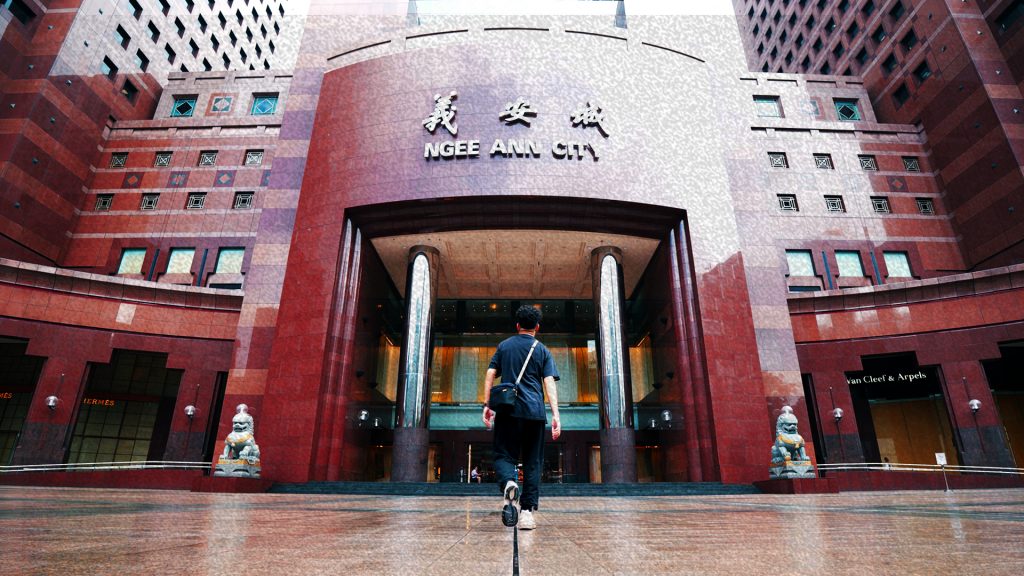
In a recent video about Ngee Ann City, one of Orchard Road’s glitziest malls, Fazli turns his camera not to its luxury boutiques, but to the ground beneath them.
“Imagine this: where you now enjoy your favourite latte or shop for the latest fashion, there once lay thousands of graves,” he narrates, as the video drifts through artistic shots that reimagine Orchard Road when it was still an actual orchard, bordered by a sprawling cemetery.
“It’s fascinating, isn’t it?” He asks the viewer. “We often walk through these places without realising the history beneath our feet.”
With a shift in focus, he has found renewed purpose: telling stories not just about spaces, but about the Singaporeans shaped by—and shaping—them.
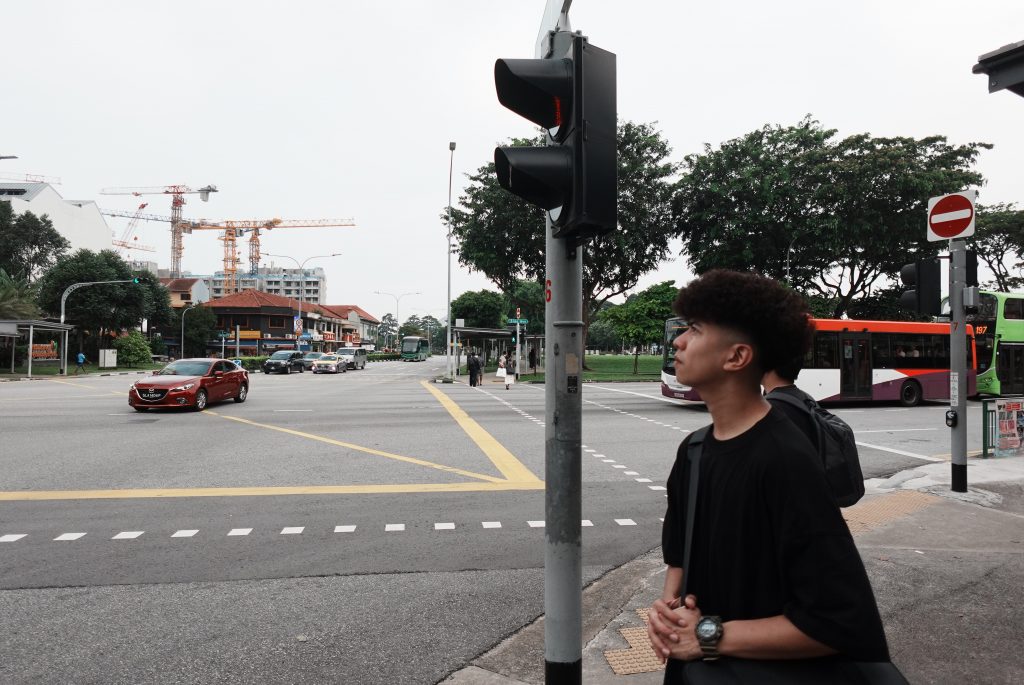
He’s reemerged as a more perceptive storyteller, and divulges that he will be setting out next into the unassuming heartlands where we live, work, and play, to dredge up the past we’ve walked past all our lives.
“It’s not just what you tell, but how you tell it,” he says now, more assured in his role as both cinematographer and host.
Over time, he has learned to tailor his voice to meet his audience where they are. When speaking to older viewers, he leans into reflection; for younger ones, he sharpens his visuals and keeps things direct.
“Being able to speak across generations isn’t something you pick up from a textbook,” Fazli says.
“You have to live it—watch how people respond, tune your delivery, and keep evolving.”
If It’s Not Broken, You Can Still Film It
“These structures are part of how we became who we are.”
When I bring up past projects like the Bruneian Hostel and Tuas TV World, razed without ceremony, Fazli again tries to mask his frustration.
“Many young Singaporeans feel disconnected, because they think there’s nothing to explore here… I used to feel that way too, until I discovered what Singapore used to have.”
Rapid redevelopment often erases familiar places and the stories tied to them, before we can form lasting emotional bonds. He reckons that Singapore’s practical focus on progress can make the city feel transient and impersonal, leaving its residents yearning for a sense of rootedness.
However, as interest in local adventures waned post-pandemic, Fazli took a break.
“Life happened—moving, marriage, work.”
Time away from the camera gave him space to reflect, not just on the stories he had told, but why he felt compelled to tell them. And after three years on hiatus, he’s making a comeback.
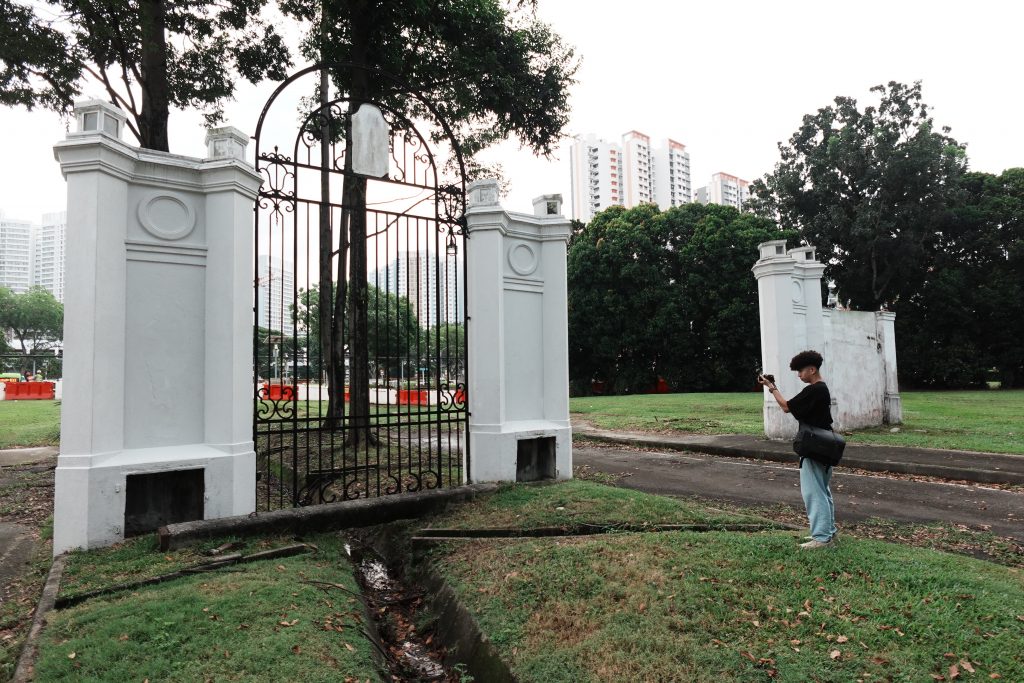
Fazli’s longing for identity remains. But it’s now coupled with a sense of duty, a belief that the privilege of discovery comes with responsibility.
And so, without institutional backing, he’s taken up the mantle of chronographer. Fuelled by a desire to offer others a sense of belonging, he’s scrambling to document the Singaporean zeitgeist before it slips from collective memory.
In a city obsessed with reinvention, Fazli is doing something radical: he’s inviting the old to remember, and the young to discover.
In letting metrics and relevance dictate what stays and what goes, we risk erasing more than inefficiencies. Fazli’s work resists that logic, challenging the pace at which we’re expected to forget, slowing time long enough for meaning to catch up.
So before the next landmark of Singapore’s cultural identity is erased, Fazli presses record.

